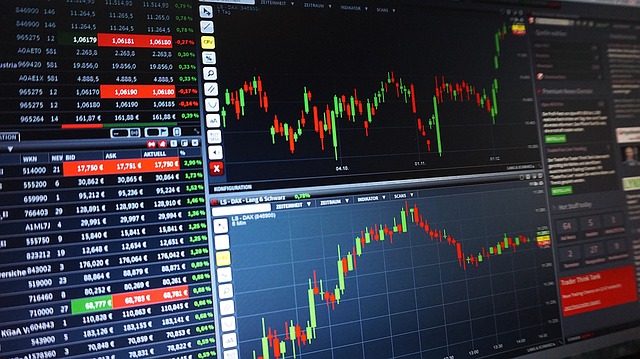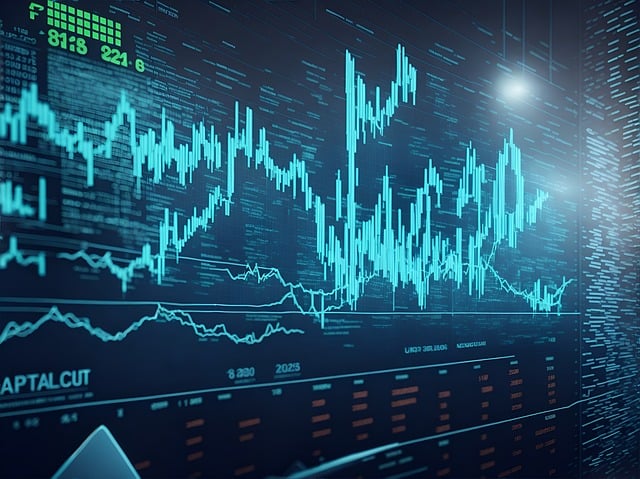The Rise of Trading Bots: Revolutionizing the Way We Trade
Author: Jameson Richman Expert
Published On: 2024-08-07
Prepared by Jameson Richman and our team of experts with over a decade of experience in cryptocurrency and digital asset analysis. Learn more about us.
In the fast-paced world of trading, the introduction of trading bots has changed the game for retail and institutional investors alike. These algorithms can execute trades based on predefined criteria without the need for human intervention, bringing a level of efficiency and scalability that is hard to match. In this article, we’ll explore the various aspects of trading bots, how they work, their advantages and disadvantages, and my personal insights into their future in the trading landscape.

What Are Trading Bots?
Trading bots are automated software programs that buy and sell assets in financial markets using algorithms. They analyze market conditions, execute trades, and manage portfolios all without human oversight. Given the constantly changing nature of the markets, trading bots allow traders to leverage real-time data and respond to market conditions faster than any human can.
Types of Trading Bots
There are several different types of trading bots, each designed to meet specific trading strategies and market conditions. Here are some of the most common:
- Market Making Bots: These bots aim to profit from the bid-ask spread. They place buy and sell orders simultaneously, capturing profits on the spread.
- Arbitrage Bots: These bots exploit price discrepancies between different markets or exchanges. They buy low on one platform and sell high on another, making small profits that can accumulate over time.
- Trend Following Bots: These bots use technical analysis to follow market trends. They buy when prices are trending upward and sell when they start to decline.
- Mean Reversion Bots: These bots operate on the assumption that prices will revert to their mean. They buy when prices are low and sell when they are high.
How Do Trading Bots Work?
At the core of trading bots is a set of algorithms that analyze vast amounts of market data. These algorithms can be programmed based on various trading strategies, risk tolerance, and market conditions. The process typically involves several steps:
Data Collection
Trading bots continuously gather data from multiple sources, including price feeds, social media, news articles, and more. This data is critical for making informed trading decisions. For instance, some bots can react to news events affecting asset prices within seconds.
Decision Making
Once the bot has collected sufficient data, it applies its algorithms to analyze it. For example, a trend-following bot might identify an upward trend in a stock's price and execute a buy order. The decision-making process can involve complex statistical models, machine learning, and even elements of artificial intelligence.
Execution of Trades
After determining the best course of action, the bot executes trades on behalf of the user. This involves placing market or limit orders in various trading platforms. The speed at which a bot can execute trades often offers an edge, particularly in highly volatile markets.
Advantages of Using Trading Bots
The benefits of using trading bots extend beyond mere convenience. Here are some of the key advantages:
- Elimination of Emotional Trading: One of the biggest challenges traders face is managing their emotions. Bots operate strictly on algorithms, minimizing the risk of emotional decision-making.
- Efficiency and Speed: Bots can analyze large amounts of data and execute trades in a fraction of a second, allowing for opportunities to be captured that human traders would miss.
- 24/7 Market Access: Unlike humans, trading bots can operate around the clock, taking advantage of opportunities in different time zones without the need for sleep.
- Backtesting Capabilities: Many trading bots offer backtesting features that allow traders to see how their strategies would have performed historically, helping to refine algorithms before applying them in the real market.
Disadvantages of Using Trading Bots
Despite their many benefits, trading bots also come with several drawbacks. Here are some concerns to consider:
- Technical Issues: Trading bots depend heavily on software and hardware. A technical glitch can result in missed opportunities or unintended losses.
- Lack of Market Understanding: Bots cannot adapt to unforeseen market events or changes in market sentiment as adeptly as humans can. They rely on historical data, and while this is useful, it doesn't encompass all the nuances of market behavior.
- Over-Optimization Risk: Some traders may over-optimize their bot to perform well on historical data, which can lead to disappointing results in live trading.

Choosing the Right Trading Bot
With the growing popularity of trading bots, the market is flooded with options. Choosing the right bot can be a daunting task. Here are a few factors I think you should consider:
1. Understand Your Trading Style
Before selecting a bot, assess your trading style. Are you a day trader, swing trader, or long-term investor? Each bot is designed for different market strategies, and aligning a bot with your style will maximize its effectiveness.
2. Research the Bot's Track Record
Investigate how successful a bot has been in various market conditions. Look for reviews, testimonials, and historical performance metrics. A reputable bot should have transparent data available for potential users.
3. Assess the User Interface
The design and functionality of a trading bot's interface can significantly impact your trading experience. A user-friendly platform makes it easier to monitor trades and adjust settings as needed.
The Future of Trading Bots
As technology continues to advance, I believe that trading bots will play an increasingly central role in the financial markets. With the rise of artificial intelligence and machine learning, we can expect bots to become even more sophisticated in their approach to trading.
Regulatory Challenges
However, with increased effectiveness comes increased scrutiny. Regulatory bodies are likely to impose stricter guidelines on the use of trading bots to protect retail investors from scams and manipulation. This is a positive development that should ultimately lead to safer trading environments.
Ethical Considerations
The ethical implications of using trading bots cannot be overlooked. As these tools gain popularity, discussions around market fairness and the impact on human traders will become more prominent. Are we moving towards a trading landscape that favors the technologically advanced? This is a question we must consider.
Conclusion
Trading bots are undeniably a powerful tool in modern trading, offering unparalleled speed, efficiency, and data analysis capabilities. While they come with their own set of challenges and risks, their potential benefits far outweigh the negatives for many traders. As someone who has observed the trading landscape evolve, I wholeheartedly believe that embracing technological advancements is crucial for success in this competitive field. However, as we adopt these tools, we must remain vigilant about their ethical implications and strive to create a more inclusive trading environment for all. Whether you’re a seasoned trader or just starting out, understanding the mechanics and applications of trading bots can provide you with the edge needed to navigate today’s complex financial markets.